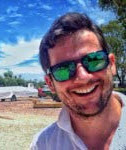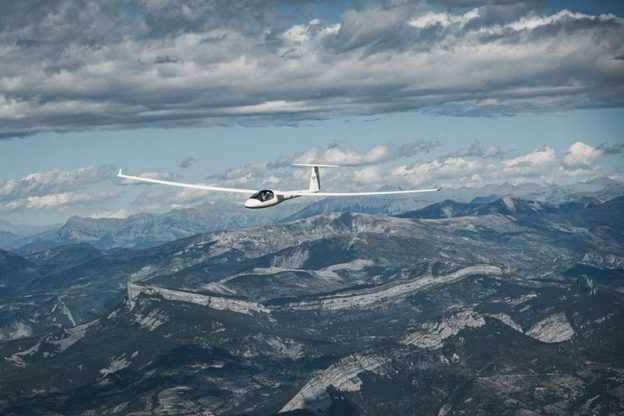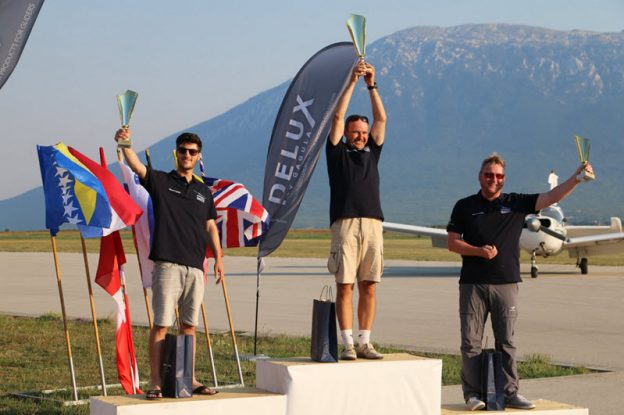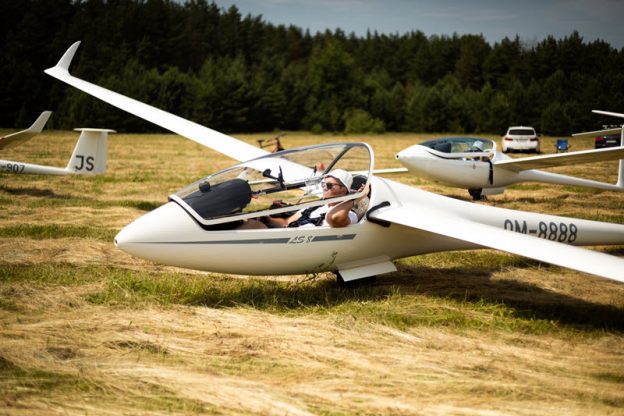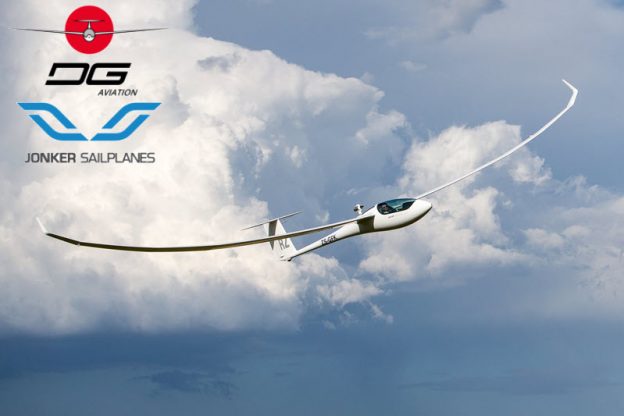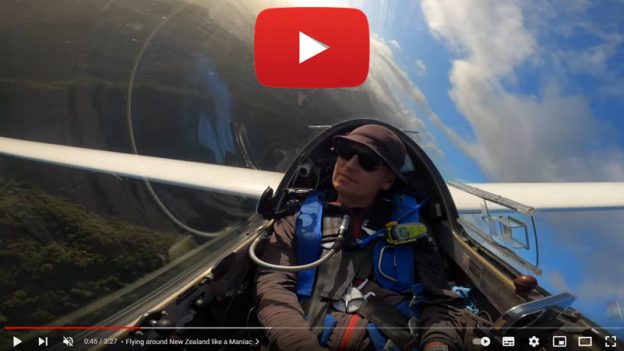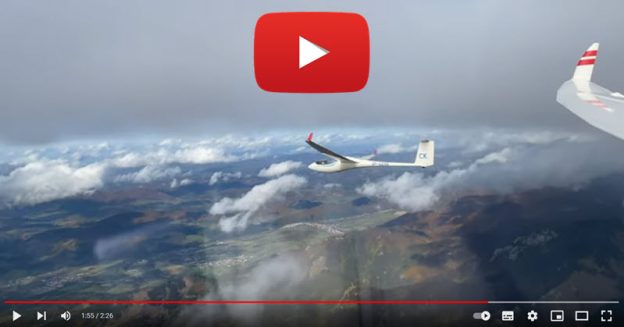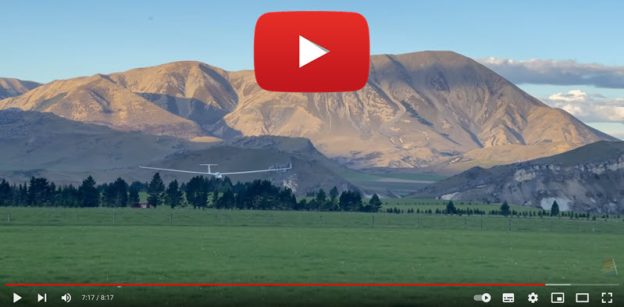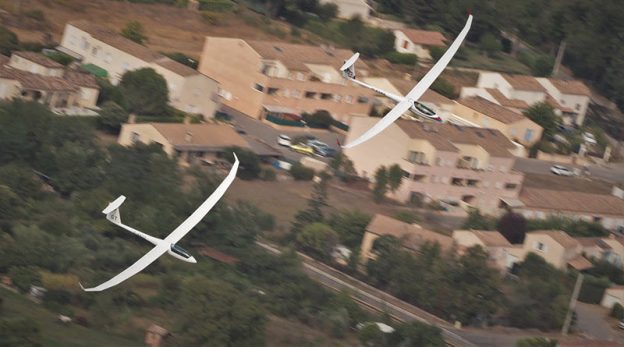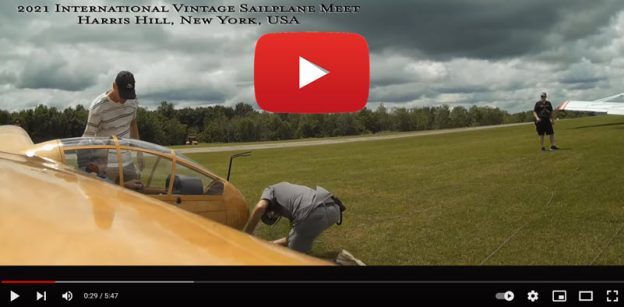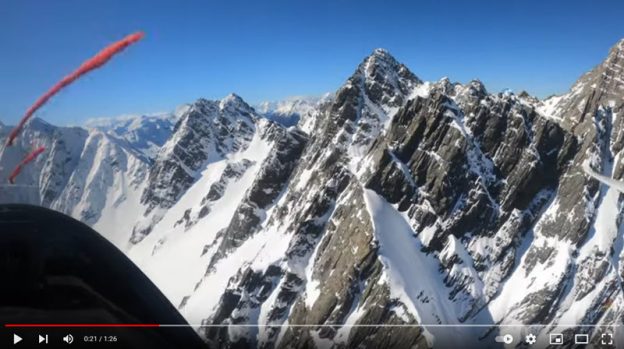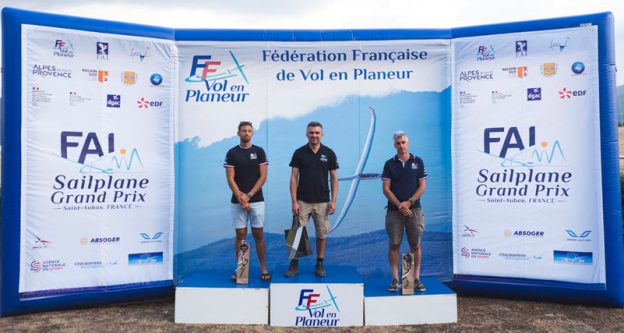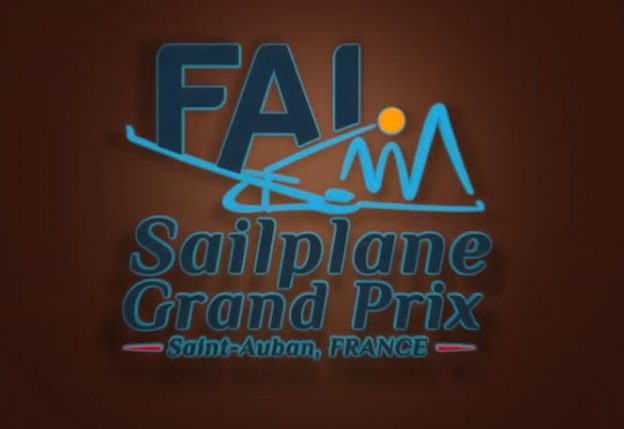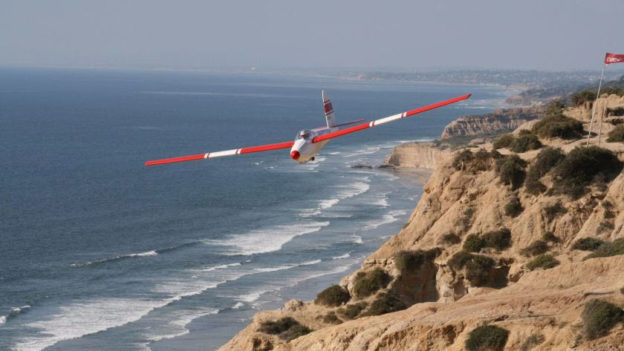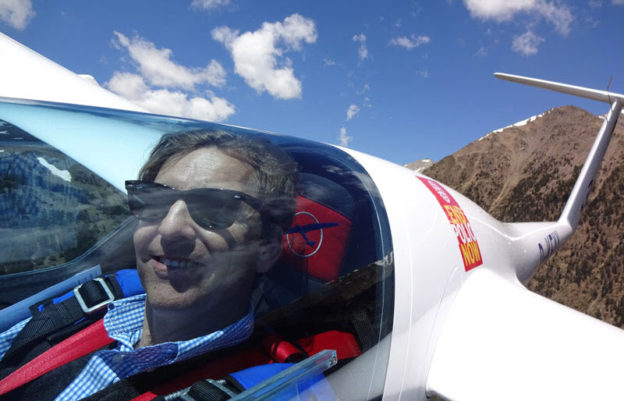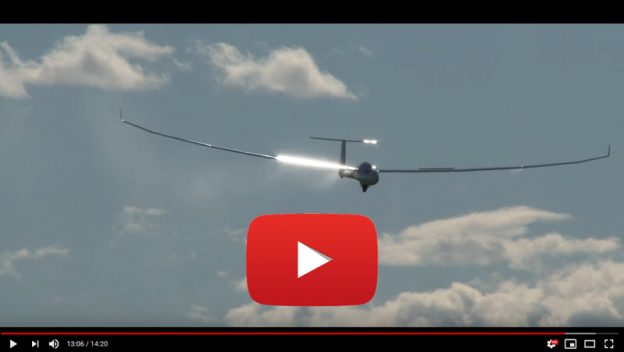Guido and I launched, experiencing the strong wind blowing us toward the ridge. At 1500ft above the airport, we popped off tow, right over the mountain. We nestled right into the ridge lift, which pushed the glider higher and higher, such that we were maintaining 60 knots at 2100ft MSL. The clouds were at all sorts of different levels, with some wisps even forming below ridge top on the downwind side of the ridge. But on the upwind side, the clouds were rapidly rising, the sun was shining, and the day was looking beautiful. I called Philip back at the airport to let the folks know that the surf was up and it was time to fly!
After a couple of beats back and forth the local ridge in the high band of the local ridge, I finally couldn’t take it anymore. By the Upper Reservoir, I asked if I could take the controls. Guido let out a long-excited gasp as I made a very steep turn, peeled over and dropped onto the trees cruising at 100 mph. The lift was rock solid, so I gave it back to him with instructions to slow down and float up a bit higher. I was going to give him a taste of ridge cross country soaring was like, so we kept going southwest bound.
The big challenge was locating the narrow ridge band. The sweet spot in the lift band was very elusive with such a steep mountain face that is constantly changing shape, bending around and rising and falling in elevation. I find that going a fair distance in a straight line is both fun for the student, but also instructive in really learning how to find that best part of the lift. So Guido and I cruised past the Bangor Offset and had to bear with my coaxing and admonitions geared at making minuscule corrections in pitch, roll, and yaw, constantly adjusting for the slight gusts on one side or the other of the glider that hinted at the best lift. Guido did a wonderful job and we were at Lehigh Gap in what felt like a heartbeat. Looking over our wing, I pointed out that Slatington Airport is a Silver Distance away from Blairstown. Guido was shocked and amazed at how fast we made so many miles!
As we turned, I glanced at my watch and saw it was 1:35 pm. I texted Jen that we’re 30 miles out and we will land at 2 pm. By all accounts it should work exactly as so, but what an amazing thought that one could be in a glider and expect to time an arrival like so. Sure enough, Guido and I flew on back, made our landing pattern for Runway 7, landing long on the clear runway in the perfect position to launch for the next flight. Jen came on out and sure enough, it was exactly 2 pm. I grinned as I announced that Aero Club Albatross Airlines was ready for the next customer.
We launched straight to the ridge and sure enough, it was still working perfectly. We hung a left on the Appalachian super-highway and had no trouble floating along at 70 knots 400-500ft above the ridge. The air was smooth and the glider felt like it was on rails. Jen marvelled at the glorious array of colours all around us, as far as the eye can see. The sun shined through patches of clouds in the distance in a radiant and delightful glow. Even the trees beneath looked like they were celebrating, gently dancing to and fro to a steady beat as the breeze kneaded through the forest below, the amber coloured leaves shimmered in the sunlight.
Jen remarked that the ridge looked like God’s carpet, with the gentle rolling colours mimicking a plush carpet beneath us.
The radio was turned down, along with the usually noisy variometer. No need to listen to the crazed manic-depressive beeps and boops that are symphonious only to the ears of the equally crazed soaring pilot. The glider quietly hummed in the breeze.
Silence.
We kept floating along peacefully until Jen giddily exclaimed that she saw bald eagles ahead! Sure enough, there was a group of three of them thermalling together. Seeing that Jen was so excited to go play with them, I made a hard reversal and joined these glorious birds. I circled with them and we made a couple passes less than a wingspan below. Jen couldn’t contain her wonder and joy, grinning from ear to ear. I saw that they were heading northbound, and figuring I’d give her a break from all the unexpected circling and manoeuvring, I levelled off and kept heading along the ridge. When she expressed disappointment that she wanted to soar with our companions some more, I said, “Don’t worry, we’ll see them again soon on our return trip!”
After turning back at the Pennsylvania Turnpike Tunnel, sure enough, we spotted the bald eagles again! This time they were a little below us, so we made a couple of closer passes. Once we had one just off our wingtip. It felt like my arm was extended, my hand reaching out and inviting our feathered friend to join us in a dance.
Sometime around this time, Jen remarked that I delivered on everything I promised that day. Beautiful foliage, ridge soaring, and even bald eagles too!
I replied that would be true, only once I safely brought her back to the airport. So, we headed back home along the ridge. As we returned to the local ridge, Jen reported that she still felt wonderful and fresh, so I figured I’d end this flight with some excitement. Upon crossing the Delaware Water Gap, I pushed the nose over and dropped the glider down on the trees. The airspeed was just over 100 mph, the glider was now in the rough and tumble of the gusty air right above the ridge. You had to take care not to focus on the crisp individual branches whizzing by as your head would snap around to keep them in view. The glider was jostled a couple of times by thermals rolling over the ridge. Jen asked if this was what a violent ridge felt like. Nope, trust me this is light! A violent ridge feels like you’re inside a laundry machine, set on the high spin!
Now abeam of the airport, I pulled up to gain a little extra height for our return trip. Jen was really surprised that we had been flying over an hour and fifteen minutes, her longest flight to date. After we landed, she remarked that it felt like the flight went by in a flash!
With the ridge still working, I felt up for one more flight. Operations were winding down and Tommy had put away the tow plane. With no one around the flight line, I was wondering who I could take for a ride. At this time, I saw Tommy’s truck heading toward us and he felt like a great victim. When I offered to fly with him, he eagerly accepted, saying it was his first time flying the ridge in a glider and his first flight in the Grob. We quickly strapped him in and Aaron gave us a quick tow in the Pawnee to the ridge.
Sure enough, the ridge was still working! Nonetheless, the conditions were softening up, now becoming difficult to float above 1900ft. As we crossed the Water Gap, I saw the trees more in the slow dance phase of the afternoon, and we settled down to 1800ft. The ridge was still consistent and smooth, though we turned at the hang glider launch as it was prudent to stay closer to home.
I gave the controls to Tommy, who was delighted to feel what riding the ridge was like. He was smooth and solid on the controls and had no trouble staying in the lift. We flew up to Catfish Tower and then looped back to the local ridge. The wind kept weakening and weakening, with the leaves hardly moving at all. I took the controls again and we kept floating along the weak ridge, with every beat getting a little lower. We were finally level at ridge top, with Tommy exclaiming amazement at how little wind it took to sustain the glider in the air. After a little over an hour, with the wind giving its dying breath, we headed back to the airport, landing just shy of 5 pm.
We were the last ones down. After Jonathan and Bobby stopped by to announce that they were heading on a retrieve for Chip, who had fallen off the ridge near the Bangor Offset, the airport became completely deserted. We cleaned the glider and tucked it away for the evening, watching the mostly overcast sky with crepuscular rays in the distance shining through holes in the clouds like a shower of gold. Right as we had everything tidied up, Ron and Betty Schwartz stopped by to invite Jen and me for dinner. After we all enjoyed the beautiful sunset, we had a delightful dinner together in the town. Unlike Ron, Betty had plenty of answers when I asked her, “What lessons have you learned after 58 years of marriage?” We spent a whole evening trading story, watching Ron shrug helplessly as Betty gleefully shared stories when they were dating back in Iowa (including one scandalous story about how Ron dared to wear jeans – Levi’s, no less! – when they were in college).
The only other person I know that radiates joy and happiness like Ron is Jen. I don’t know how people earn that ineffable quality, and there is nothing more delightful than surrounding yourself with such wonderful people. I felt the tingling warmth in my heart the whole way home, warming both my bones and soul. Source: ‚Soaring Economist‚.
Diesen Beitrag teilen mit:
Gefällt mir:
Gefällt mir Wird geladen …



